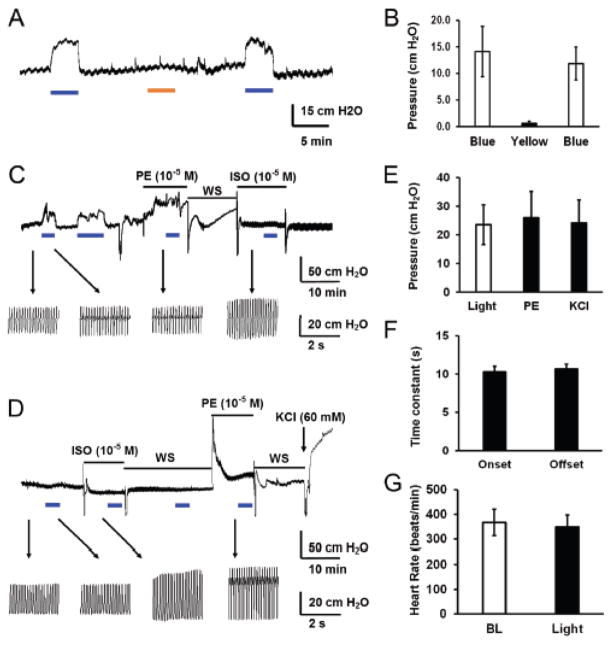Figure 4.
Optical vasoconstriction of coronary arteries by optostimulation. A, B. In isolated and perfused hearts from cdh5-ChR mice, significant coronary constriction was produced by blue light stimulation (470 nm), but not by yellow light (602 nm). C. Coronary constriction was produced by optostimulation followed by PE and isoproterenol (Isop) treatments. The optical coronary vasoconstriction was strong, long-lasting, reproducible with repetitive optostimulation, and did not cause evident changes in heart rate and pulse pressure. The latter both were augmented by Isop. Heart rate and pulse pressure were indicated by arrows toward the enlarged pattern on the bottom of the figure. D. Optostimulation did not produce any vasoconstriction in a heart from WT mouse. E. In the perfused heart from cdh5-ChR mouse, the optical vasoconstriction with ~20 mW/mm2 blue light was competitive comparing to that produced by 10−5 M PE and 60 mM KCl. F. The optostimulation triggered fast response in heart perfusion with onset and offset time less than 11s. G. Optical vasoconstriction had no significant effect on heart rate.

